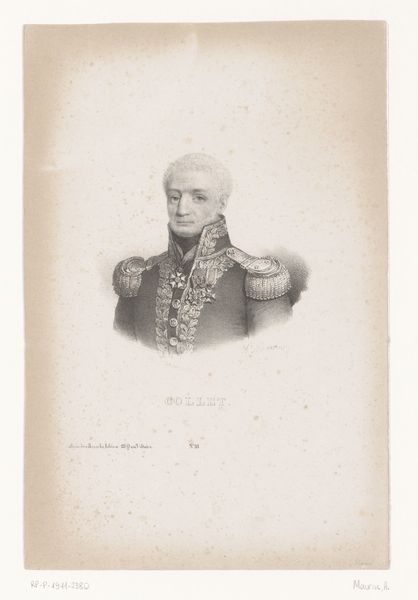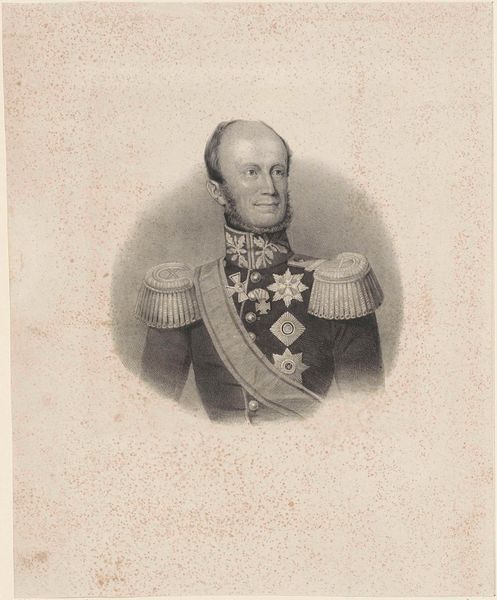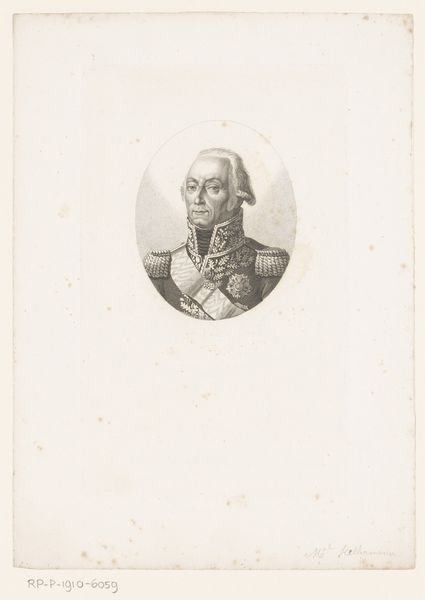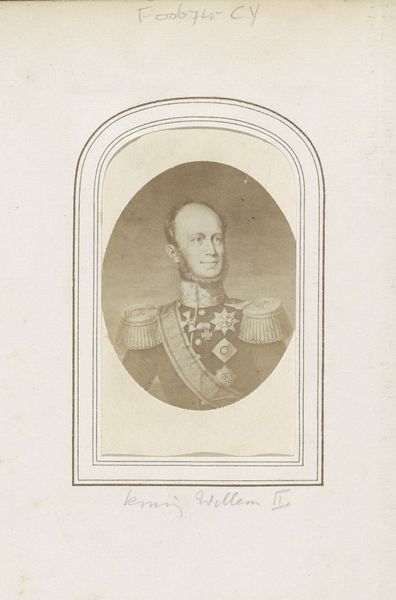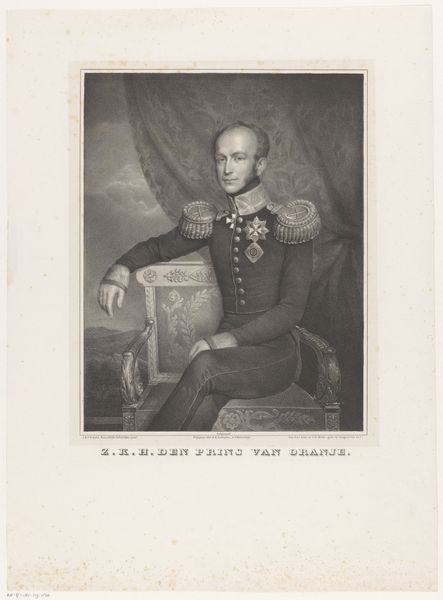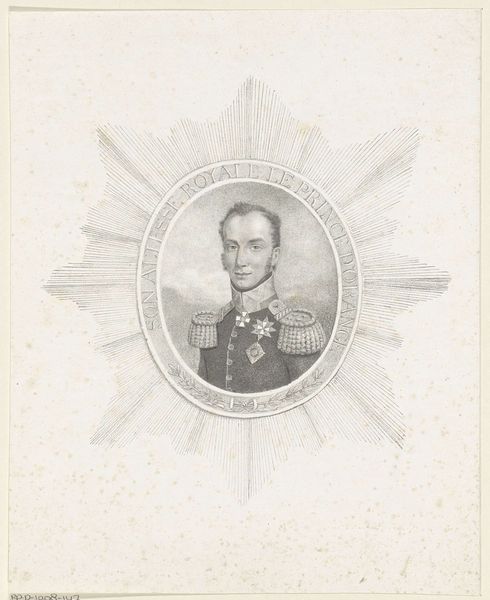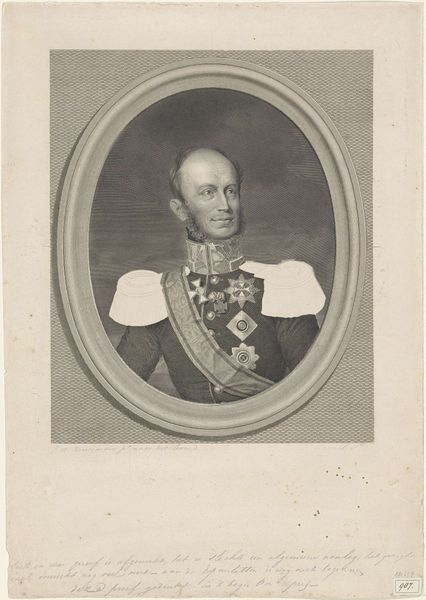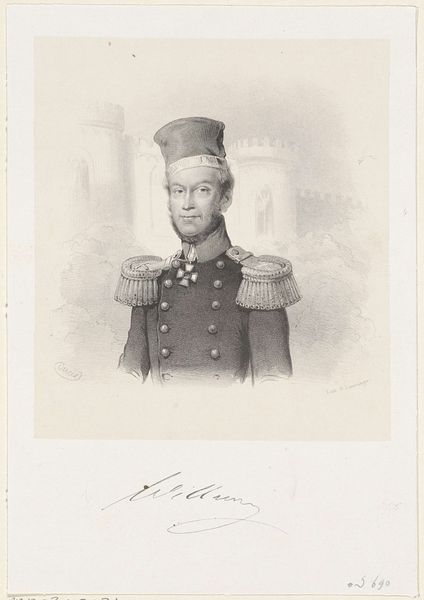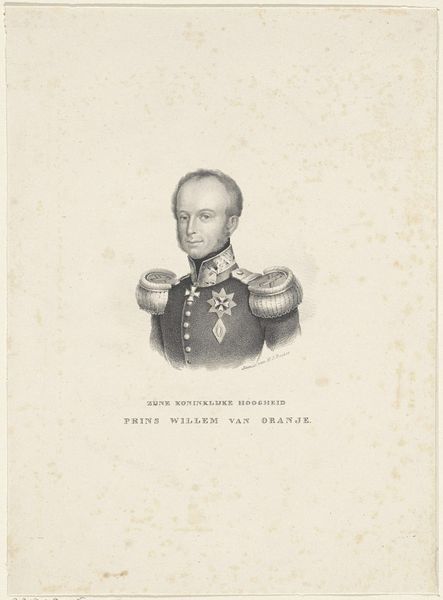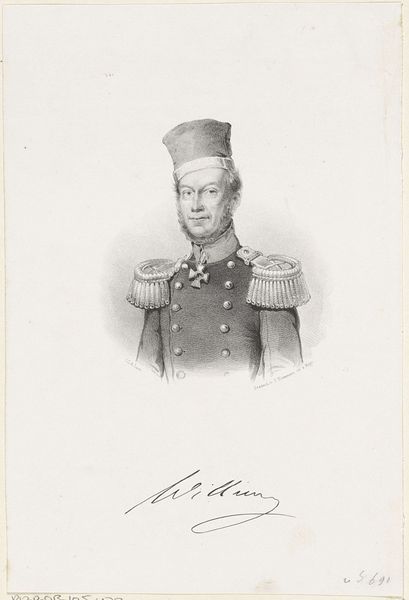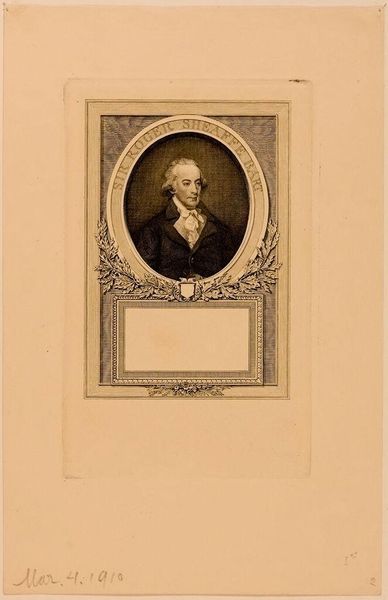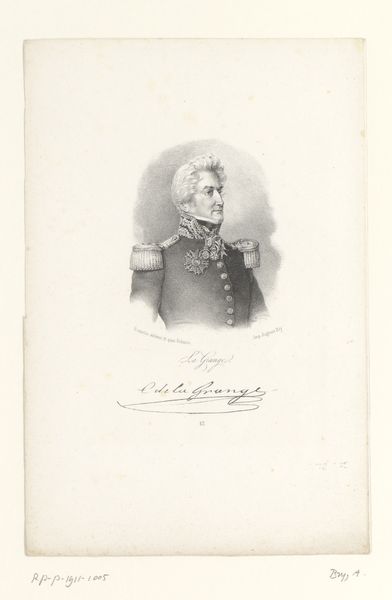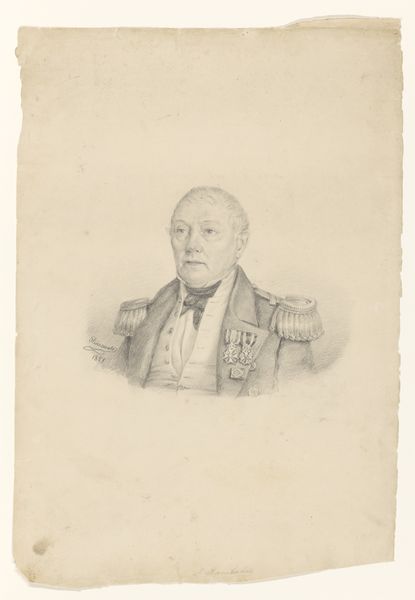
drawing, etching
#
portrait
#
drawing
#
neoclacissism
#
etching
#
archive photography
#
historical fashion
#
history-painting
Dimensions: height 152 mm, width 102 mm
Copyright: Rijks Museum: Open Domain
This undated portrait depicts Willem II, King of the Netherlands, and was produced anonymously using an engraving technique. The image presents a man adorned with potent symbols of authority: elaborate epaulettes, medals, and a high, stiff collar. These aren't merely decorative; they broadcast power, status, and adherence to a strict social order. The very act of creating and circulating such a portrait reinforces the monarchy's dominance, embedding it within the popular imagination. Consider the Netherlands during Willem II's reign. Emerging from French rule, the nation grappled with defining its identity. Institutions like the monarchy and the art world played a crucial role in shaping that identity. Portraits like this weren't just likenesses; they were tools for projecting an image of stability, strength, and continuity. To fully understand this print, we might delve into archival records, exploring the print's commission and distribution. We might look into popular press and consider audience reception. By examining the print’s journey through society, we can understand its role in shaping national identity.
Comments
No comments
Be the first to comment and join the conversation on the ultimate creative platform.
